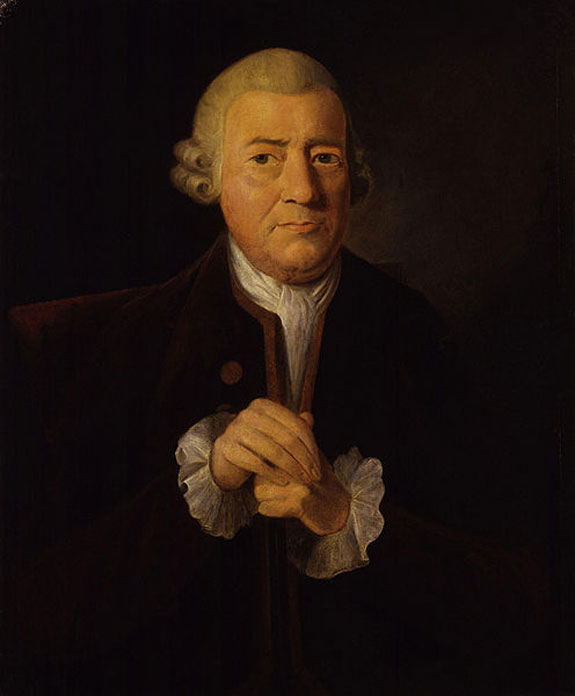January 8

On this day in 1775, John Baskerville died.
Born at Walverley, in Worchestershire, England, in 1706, Baskerville at an early age acquired such skill in penmanship that he was prompted to maintain a school in the subject in Birmingham. In 1735 he began a career in the japanning process which was then most popular for a variety of objects, such as snuff-boxes and carriage-sides. Becoming wealthy in this business he regained his attraction to letters, this time in the shape of printer’s type.
Using the Caslon types as a model, he experimented with refinements of the form, seeking greater contrast of strokes and more graceful serifs. Not being satisfied merely with a new type, he decided to become a printer and had his own press constructed, featuring a platen and bed which were much more precise in manufacture than the usual presses of the period. He then insisted that the packing be hard and solid, a practice which was counter to the methods then common in printing offices.
He next formulated his own ink, producing a black glossier than any hitherto obtainable. His greatest innovation as a printer, however, was the insertion of the sheets from the press between heated copper cylinders immediately upon leaving the press, producing a very smooth sheet of paper in which the type appeared to be unusually crisp. This combination of new type style and smooth paper was not at all well received by his fellow English printers but on the Continent it was greeted with Enthusiasm.
In his great Manuel Typographique, Pierre Fournier wrote of the type: “He, Baskerville, has spared neither pains nor expense to bring them to the utmost pitch of perfection. The letters are cut with great daring and the italic is the best to be found in any English foundry, but the roman is a little too wide.”
The English booksellers were nevertheless disenchanted with Baskerville’s attempts to improve the Quality of printing, and as a result he suffered heavy financial loss. His attempts to sell his punches and matrices were unsuccessful in his lifetime, his widow finally disposing of them in France, when they were purchased by Beaumarchais for an edition of Voltaire.
As recently as 1912 English opinion of Baskerville was still at a low ebb. The 1912 Printing Issue of The Times stated: “There is always the possibility that an enthusiast may be misguided and the verdict of the connoisseurs of today is that this was the case with Baskerville.” However, in the Printing Issue of the same newspaper published in 1929, the tide had turned. Baskerville’s “great merit was that he relied on his type and his presswork to make fine books, instead of on ornaments, and thus revived the dignity of his craft.”
Partial credit for this turnabout may be given to the American typographer, Bruce Rogers, who re-discovered the type in a French prospectus in 1917. He ordered fonts of the French casting, for use in a book published by Harvard University Press in 1921. Since that time the type has become immensely popular and in now considered to be one of the universal types.